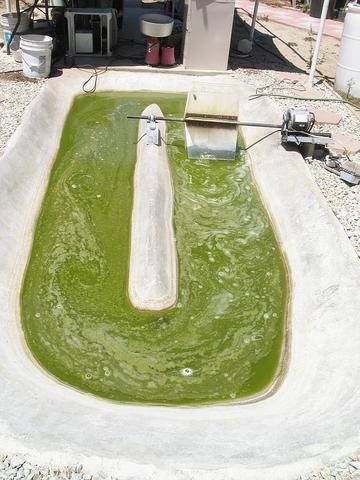• Legal Stuff 4
• Dedication: 5
• Acknowledgements 5
• Introduction 10
• Forward 12
Book One
• What are some of the things we can do with algae? 14
• Open Pond Overview 22
• Where to grow algae: 22
• Preferred Geographic Regions for Algae Production 24
• Seasonal Considerations 24
• Severe Weather Events and Elements 25
• Water Requirements for Algae Production 25
• Land 26
• What you are going to need for your Algal Pond. 28
• How big should my pond be? 28
• Open Pond Design Overview: 30
• Summary of Environmental Issues Related to Algae Cultivation 34
• Designing an effective open pond design 36
• Theoretical Maximum Algal Oil Production 37
• Site considerations: 38
• Soil conditions 39
• Small pond systems 41
• Building Backyard Micro Farms 47
• Before You Begin 49
Book Two: Building Backyard Micro Farms
• Overview 50
• Design Notes 51
• Building a Bio Pond 51
• When to Use a Bio Pond 52
• Biopond Parts List 53
• The Bio Pond in Action 76
• Scaling Up From The Test/Biopond 83
• Overview 83
• Livestock water troughs 84
• Building Above Ground Backyard And/Or Pilot Scale Ponds 85
• Materials: 86
• Fabrication: 86
• Building a Backyard “Raceway” Open Pond 93
• Calculating the amount of algae per square foot of open pond. 118
Book Three Commercial Open Ponds
• Open Systems 120
• Algae 121
• Light 122
• Water 123
• Nutrients and CO2 123
• pH Values 124
• Aeration and Mixing Of Algae 125
• Temperature of the Pond 125
• Salinity 126
• Risks and opportunities 127
• Land use: 127
• CO2: risks 128
• Nutrients: risks and opportunities 129
• Water consumption: risks and opportunities 130
• Genetically modified organisms (GMOs): opportunities and risks 131
• Knowledge gaps 132
• The Open Pond Design Concept: 133
• Scale-Up Challenges and Issues to Consider 137
• Stability and/or Contamination of Large-Scale Cultures 137
• System Productivity 139
• Nutrient Sources, Sustainability, and Management 140
• Water Management, Conservation, and Recycling 141
• Selecting Algal Model Systems or Study 143
• Useful Algal Characteristics 144
• What you are going to need to know and/or decide for your Algal Pond. 145
• Helpful knowledge in the physiology and biochemistry of algae 145
• The basic flow, size and mechanics of your algal pond 146
• Water Chemistry 148
• Carbonization of your pond 148
• Nutrient Recycle 150
• Nutrient Loss 151
• The Chemical composition and finding the water resources for your algal pond
• Resources and Siting 153
• Resource Requirements for Different Cultivation Approaches 153
• Heterotrophic Microalgae Approach 155
• Pond Liners 157
• Pond Linings and Ratings 157
• The Paddle Wheel System 162
• Things you will need to consider for your paddle wheel: 163
• Distal End Details: 164
• Contamination 165
• Bacteria. 167
• Insects
• Large Scale Harvesting of Algae 168
• Micro Straining 168
• Belt Filtration 169
• Settling 170
• Microalgae Flocculation 172
• Centrifugation 172
• Electroflotation 174
• Algae Drying Systems 176
• Flash drying 177
• Rotary Dryers 177
• Incinerators 178
• Toroidal Dryer 178
• Spray Drying 178
• Solar Drying 179
• Algae Yield in Open Ponds 180
• The Problem with extrapolating algae yields: 180
• Real world yields 181
• Power Considerations 183
• Algae Power 183
• Biogas Production by Anaerobic Digestion 185
• Anaerobic Digestion of Whole Algae 185
• Human Energy 185
• Bicycle Energy 186
• How it Works 186
• Running DC Devices 187
• Running AC Devices 187
• Solar Energy 187
• How Small Solar Electric Systems Work 187
• Sizing Your Small Solar Electric System 188
• Wind Energy 189
• Sizing Small Wind Turbines 189
• What Size Wind Turbine Do I Need? 190
• Small “Hybrid” Solar and Wind Electric Systems 191
• Generators 192
• Selecting Your Fuel 193
• Algae Production Costs, Uncertainties and Challenges 194
• Challenges: 194
• R&D Challenges 195
• Feedstock challenges include 195
• Algal Biology 195
• Realistic Costs 197
• Example Lay-out of a Large Scale Biodiesel Farm 205
• Conclusion 214
• Developing an Algae Economy 215
• References 222
• Bonus Material 223

